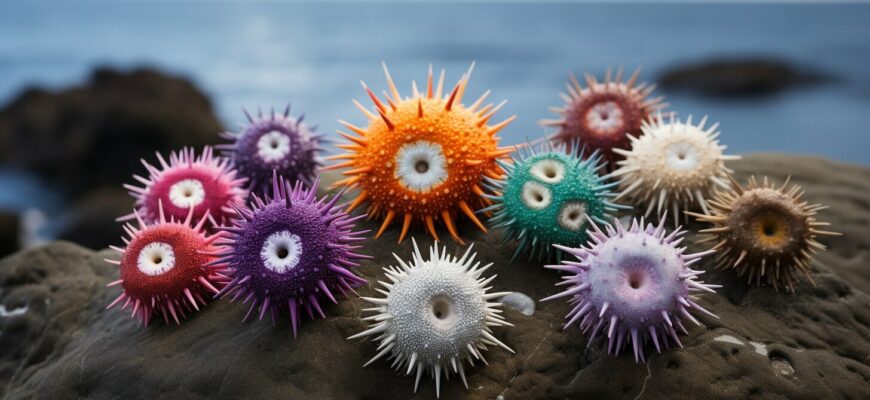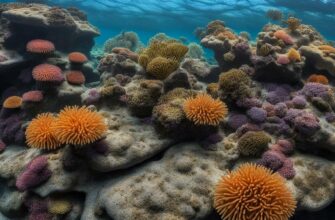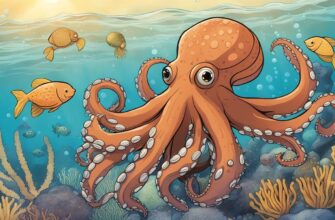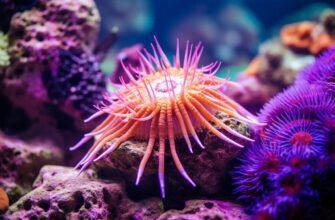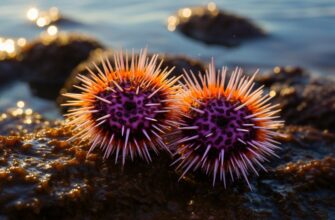Welcome to the world of sea urchins, where movement is essential for survival and success. These fascinating creatures have captivated the minds of scientists and curious onlookers for ages, raising questions about how they manage to move around so efficiently in their underwater habitats. Understanding sea urchin locomotion can provide important insights into their behavior and ecological roles, and even inspire new technologies. In this article, we’ll explore the different types of sea urchin movement and unravel the secrets behind their impressive abilities.
So, how exactly do sea urchins move? Let’s dive in and find out!
- Types of Sea Urchin Locomotion
- Crawling: The Primary Mode of Sea Urchin Locomotion
- Swimming: A Surprising Ability of Sea Urchins
- Frequently Asked Questions About Sea Urchin Movement
- How fast can sea urchins move?
- Do sea urchins have any limitations in their movement?
- Can sea urchins move in all directions?
- Are there any interesting facts about sea urchin movement?
Types of Sea Urchin Locomotion
Sea urchins are fascinating creatures known for their unique movement abilities. They use three primary modes of locomotion, each of which allows them to move in distinct ways and for different purposes. Here are the types of sea urchin locomotion:
| Type of Locomotion | Description |
|---|---|
| Crawling | Sea urchins move by crawling on their tube feet and spines, using a coordinated muscular control that allows them to move in any direction. |
| Swimming | Sea urchins can also swim, using modifications in their spines and strong muscle contractions that allow them to propel themselves through the water. |
| Tube Feet Locomotion | Sea urchins can also utilize their tube feet to move slowly and carefully along surfaces as they explore their environment. |
Each of these types of locomotion is essential for sea urchins to survive in their natural habitats. While crawling is the primary mode of movement, swimming and tube feet locomotion are also critical for finding food, avoiding predators, and navigating their surroundings.
Crawling: The Primary Mode of Sea Urchin Locomotion
When it comes to sea urchin movement, crawling is the primary mode of transportation. This method involves the use of the sea urchin’s tube feet and spines to propel themselves forward.
The process of crawling requires coordination and muscular control. Sea urchins use their tube feet to create a suction-like effect that allows them to stick to surfaces as they move. Meanwhile, their spines provide traction and stability, enabling them to navigate uneven terrain.
One advantage of crawling for sea urchins is that it allows them to forage for food more efficiently. As they move along the ocean floor, they can use their sense of smell to detect nearby sources of food and then use their tube feet to retrieve it.
Crawling also helps sea urchins avoid predators. By staying close to the ocean floor, they can blend in with their surroundings and make it more difficult for predators to spot them.
Overall, crawling is a highly effective and efficient mode of transportation for sea urchins, allowing them to survive and thrive in their marine environments.
Swimming: A Surprising Ability of Sea Urchins
While crawling is the primary mode of movement for sea urchins, these fascinating creatures are also capable of swimming. This ability is less well-known and is not employed as frequently as crawling, but it is still an important adaptation that contributes to their survival.
Sea urchins swim using a combination of spine and muscle movements. The spines are modified in a way that allows them to act as paddles, propelling the creature forward. Meanwhile, strong muscle contractions are used to achieve the necessary level of propulsion.
Swimming is typically employed by sea urchins to escape from predators or to reach new foraging grounds. In some cases, it may also be used as a way to overcome obstacles in the environment.
It is important to note that not all sea urchins are equally adept at swimming. Some species are better suited for crawling, while others have evolved specific adaptations that enable them to swim more effectively. As with crawling, swimming is an important aspect of sea urchin locomotion that plays a role in their behavior and survival strategies.
Frequently Asked Questions About Sea Urchin Movement
Sea urchins are fascinating creatures with unique movement abilities. If you’re curious about how they get around, read on for answers to some commonly asked questions:
How fast can sea urchins move?
Sea urchins are not known for their speed. Crawling sea urchins can move at a rate of about 15-40 cm per minute, depending on the species. Swimming sea urchins can move faster, reaching speeds of up to 8 cm per second.
Do sea urchins have any limitations in their movement?
Sea urchins are well-adapted to their environments, but there are still some limitations to their movement. Crawling sea urchins face obstacles like rocks and dense vegetation, while swimming sea urchins need a certain level of water flow to move effectively.
Can sea urchins move in all directions?
Yes, sea urchins can move in all directions. Crawling sea urchins can move forward, backward, and sideways by using their tube feet and spines. Swimming sea urchins can move in any direction by adjusting the angle and direction of their spines.
Are there any interesting facts about sea urchin movement?
Yes! Sea urchins can use their spines not only for movement, but also for defense and sensing their environment. Some sea urchins can even move their spines in a coordinated way to create fluid-like motion, allowing them to swim through the water more efficiently.
Overall, sea urchins are impressive in their ability to move in a wide range of environments. Their unique adaptations and behaviors make them a fascinating subject for study and observation.

